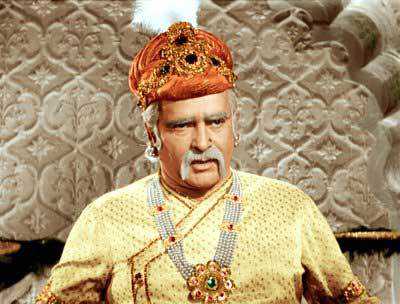Brajesh Bhatia
What is so special about this date? Exactly one hundred and ten years ago, on this day, a child was born to the wife of Dewan Basheshwarnath Kapoor, a sub-inspector of police, in Lyallpur, Punjab (now in Faisalabad, Pakistan). The child was named Prithviraj Kapoor.
A famous journalist, Baburao Patel, once said, “There is no place in the films for uncouth brawny Pathans who think they can make as actors”. To this, Prithviraj replied, “Baburao, do not provoke this Pathan. If there is no place for me in the Indian films, I shall swim across the seven seas to Hollywood and make it there as an actor”. However, the need for his swimming across to Hollywood did not arise as Prithviraj Kapoor and his progeny for the past seventy years have been ruling the Indian cinema.
While studying law at the Edwards College in Peshawar, Kapoor was spotted by Professor Jai Dayal, who taught literature and drama, and he mentored him to become a great actor. Kapoor was married at the age of 18 to a 14-year-old Ramsarni Mehra, a girl chosen by the family. Their marriage lasted till they both died from cancer in 1972 within a fortnight – he on May 29, and she on June14.
Career goals
Prithviraj came to Bombay in 1928, on borrowed money from one of his aunts, where he joined Imperial Films Company. After working in two films as an extra, he was given the lead role in his third film Cinema Girl in 1929. After working in nine silent films, he was assigned a supporting role in India’s first talkie film, Alam Ara, in 1931.
Perhaps his best performance came in as Alexander the Great in Sohrab Modi’s Sikandar in 1941. However, all these years, he remained committed and attached to theatre where he developed a reputation as a very fine and versatile actor.
In 1946, he found his own theatre group, Prithvi Theatres, and their first presentation on the stage was Abhigyana Shakuntalam, a classic tale written by the famous poet Kalidaas in Sanskrit. For the next 16 years, Prithvi Theatres moved around the country and performed several hit plays. Pathan, a story of a Muslim and his Hindu friend, opened in April 1947 and was performed more than 600 times.
By the late 1950s, it became evident that travelling theatre with a cast of 80 characters and props for four to six months at a time was not feasible and most of the actors mentored by Prithviraj had already moved to film industry, including his own sons.
As he progressed to his 50s, he gradually ceased theatre activities and accepted offers from film-makers, including his own sons. Who can forget his role of a stern judge in the film Awaara, appearing with his own son Raj Kapoor?
Later, he gave a memorable performance as the Mughal Emperor Akbar in Mughal-E-Azam, produced by K. Asif that had been in the making from 1944 to 1960.
And again who can forget his role as stentorian grandfather in Kal Aaj aur Kal, a 1971 film appearing with his son Raj Kapoor and grandson Randhir Kapoor. It may also be worth mentioning here that his father, Basheshwar Nath Kapoor, had also played a small role in Awaara.
Awards and honours
In 1954, Prithviraj was awarded the Fellowship by the Sangeet Natak Akademi, followed by the Akadami Award by the Sangeet Natak Akadami in 1956. Indian Postal Department issued a special two-rupee commemorative postage stamp observing the golden jubilee year of the founding of Prithvi Theatres in 1960 with his photograph on the stamp.
He was awarded Padma Bhushan by the Government of India in 1969 and Dadasaheb Phalke Award for the year 1971 was posthumously awarded to him in 1972, for his immense contribution to Indian theatre and cinema.
(The writer is a US-based Cinema buff)
Unlock Exclusive Insights with The Tribune Premium
Take your experience further with Premium access.
Thought-provoking Opinions, Expert Analysis, In-depth Insights and other Member Only Benefits
Already a Member? Sign In Now










